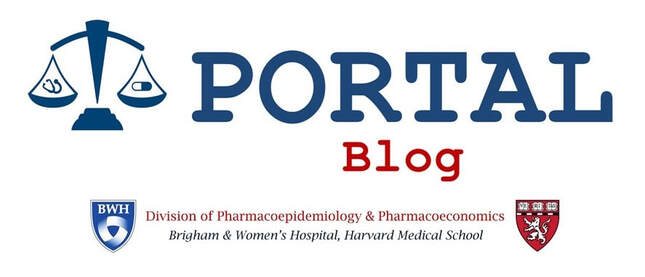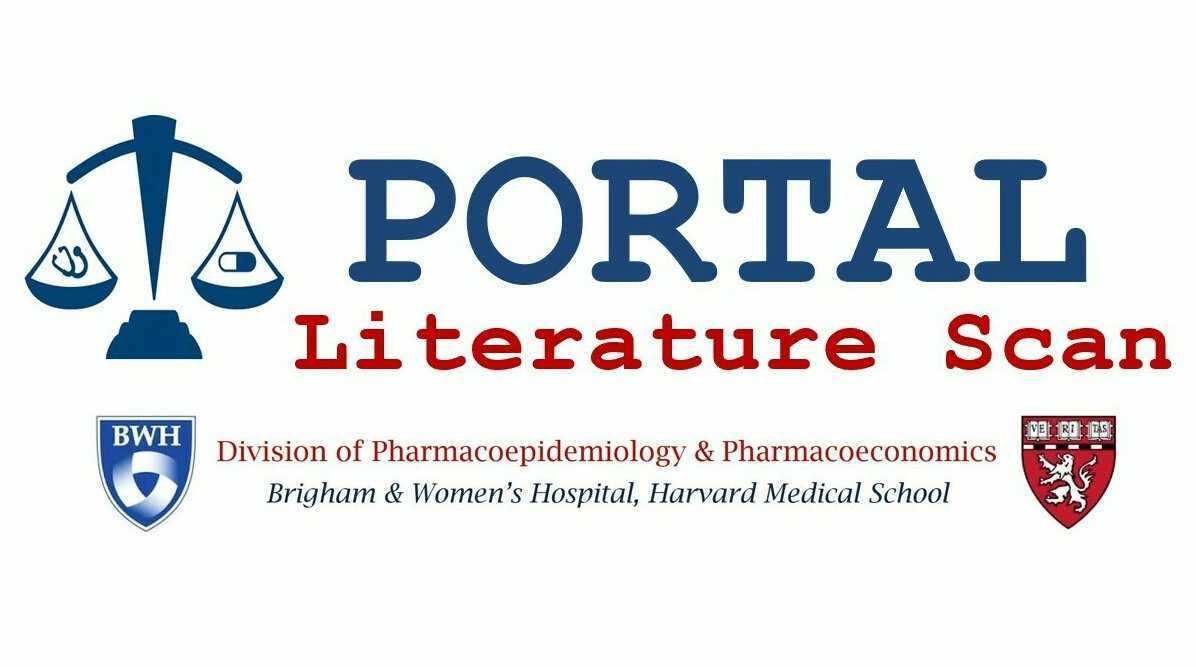|
By Beatrice Brown Instituted by the US Food and Drug Administration (FDA), Risk Evaluation and Mitigation Strategy (REMS) programs place additional restrictions on drugs deemed to pose heightened safety concerns. One such drug regulated by a REMS program is mifepristone, which is used together with misoprostol to induce a medication abortion during the first 10 weeks of pregnancy. During the COVID-19 pandemic, the FDA suspended in-person requirements for many drugs subject to REMS programs. However, they did not suspend these requirements for mifepristone, leading the American College of Obstetricians and Gynecologists to challenge the validity of the REMS program on the grounds that it impeded access to abortion and put women at unnecessary risk for contracting COVID-19. Although a federal district court suspended these in-person requirements for the duration of the public health emergency, the ruling has proved controversial. A new article in Annals of Internal Medicine by researchers from PORTAL and the Milken Institute School of Public Health at George Washington University aims to shed light on the comparative safety of mifepristone and the need to ensure access to mifepristone in today’s political climate surrounding abortion rights. Building on previous arguments highlighting the low absolute risks of mifepristone, we looked at the safety profile of both medication abortions and surgical abortions. Although numerous studies demonstrate that the two methods have comparable safety profiles during the first 10 weeks of pregnancy, the risks of surgical abortion increase with gestational age, suggesting that additional restrictions on mifepristone may increase rather than decrease the risk posed to women as a result of seeking a later surgical abortion. We also contextualize the importance of access to mifepristone within the political climate surrounding abortion rights. With Justice Ginsburg’s recent passing, states passing an increasing number of laws that contradict the Supreme Court’s precedent on the constitutional right to abortion, and the weakening of the ACA’s contraceptive mandate, which may cause hundreds of thousands of women to lose free access to contraceptives, unburdened access to mifepristone is more important than ever. Further, given language by multiple states calling abortions “nonessential” during the pandemic, messaging is particularly important. Keeping the REMS requirements for mifepristone intact may suggest to women that the drug is “unsafe.” It is important that the REMS demonstrates a factual and not value-laden evaluation of safety. To best protect women’s reproductive rights, we argue that the FDA should release the REMS on mifepristone. Twenty years of data and experience suggest that it is safe to do so.  Beatrice Brown, BA, MBE is a Research Assistant at PORTAL Beatrice Brown, Neeraj Patel
Association between FDA and EMA expedited approval programs andtherapeutic value of new medicines10/7/2020
Kerstin N. Vokinger
Most novel drugs that are introduced in clinical practice globally are first approved by the US Food and Drug Administration (FDA) and European Medicines Agency (EMA). Over the past two decades, both regulatory agencies have established expedited programs, which are intended to prioritize the drugs expected to provide an improvement over available therapies. These programs are increasingly the route by which most new drugs are approved. But since many new drugs are approved on the basis of placebo controlled trials or single-arm studies, the therapeutic value of drugs benefiting from the FDA and EMA expedited programs is uncertain. An international research group with researchers from PORTAL, Yale School of Medicine, and the University of Zurich (Switzerland) evaluated the association between expedited programs and ratings of therapeutic value for all new drugs approved by the FDA and EMA from 2007 through 2019. We applied ratings of therapeutic value published by health authorities in four countries (Canada, France, Germany, and Italy) and an independent non-profit organization (Prescrire). From 2007 to 2017, the FDA approved 320 and the EMA 268 new drugs. Among the 320 new drugs approved by the FDA, 181 (57%) qualified for at least one expedited program. By contrast, 39 (15%) of the 268 new drugs approved by the EMA qualified for an expedited program. Overall, 31% (84/267) of FDA drug approvals and 31% (83/267) of EMA drug approvals were rated as having high therapeutic value by at least one organization. Among FDA approved drugs with at least one available therapeutic value rating, 45% (69/153) of expedited drugs were rated as having high therapeutic value, compared with 13% (15/114) of non-expedited drugs (P<0.001). Among EMA approved drugs with at least one available rating, a greater proportion of drugs qualifying than not qualifying for accelerated assessment were rated as having high therapeutic value (67% (18/27) v 27% (65/240); P<0.001). This was not the case for conditional marketing authorization (31% (4/13) v 31% (79/254); P=0.98). Overall, less than one-third of all new drugs approved by the FDA and EMA were rated by any of five independent organizations as having high therapeutic value—that is, providing moderate or better improvement in clinical outcomes for patients—although expedited drugs were more likely than non-expedited drugs to be highly rated. Policymakers and regulators should implement therapeutic value ratings more broadly for new drug approvals, aligning the evidentiary needs of regulatory approval and reimbursement decisions, and informing patients and physicians about the benefits and risks of new drugs, especially those approved via expedited programs. Leah Rand
Prescription drug prices in the US far exceed those in any other country. In response, recent Congressional bills and an Executive Order have proposed benchmarking US prices to those in other countries. In addition, there has been a movement toward comparative effectiveness research and “value-based pricing,” aligning prices with the clinical benefit of the drug. However, such proposals have faced pushback. Conservatives express concern about importation of price controls, whereas advocates of value-based pricing are concerned that international prices may not be sufficient to determine an appropriate price for a new drug. It is important, therefore, to understand what drives price evaluation determinations outside the US. A major tool for price negotiation internationally is health technology assessment (HTA), a process of evaluating the clinical effects and economics of a drug or its cost-effectiveness. HTA organizations analyze the additional clinical benefit a new drug offers compared to available treatments and the cost difference between the new and old treatments. Though HTA is an empirical process grounded in economic and clinical evidence, it is also inherently political. A new study by PORTAL researchers in the Journal of Law, Medicine and Ethics aimed to dentify features of HTA with bioethical implications and to describe variations in how different countries have addressed those issues. The HTA methods from a group of countries referenced in a Congressional bill and that are economically similar to the US—Australia, Canada, France, Germany, Japan, and the UK—were studied as well as the Institute for Clinical and Economic Review, a US-based non-profit organization conducting HTA. Ten ethically-relevant features were identified and grouped in three categories: features that impact the calculation of cost-effectiveness, those that effect recommendations, and condition-specific carve-outs. One result with particular significance for the US is the divergent approaches to evaluating drugs for rare diseases. Prices for rare diseases have climbed during the last decade and more drugs have entered the market, putting an affordability strain on payers and on patients who may also face access limitations. Across the international HTA organizations some, as in Germany, only evaluate rare disease drugs if the predicted budget impact reaches a spending threshold; others, including the UK and Japan, increase the acceptable cost level for these drugs, while yet others make no concessions for rarity. Each choice about HTA design affects the results of the evaluation and price negotiations and patient access to the drugs. There are a range of tested alternatives and each implements a particular value about how to use public (or private) resources to determine patient access to the drugs. HTA and its recommendations and price negotiations are based on conscious, value-sensitive design choices. Whether the US benchmarks to international prices or adopts a version of HTA, policymakers need to consider which values should be incorporated into determining drug prices and therefore access. Changwon C. Lee
Biologic drugs are among the most expensive prescription drugs in the US, accounting for nearly 40% of all prescription drug spending. In 2010, Congress passed the Biologics Price Competition and Innovation Act (BPCIA) to create an abbreviated regulatory approval pathway for biosimilars, which are products that show high similarity to “originator” biologics and exhibit no clinically meaningful differences in safety, purity, and potency. By reducing the time and cost of biosimilar entry, the BPCIA intended to promote competition and curb spending. To date, however, the success of the BPCIA pathway has been limited, and only a small number biosimilars are currently available in the US. A new study by researchers at PORTAL, published in Mayo Clinic Proceedings, estimated the development times of US biosimilars under the BPCIA. Using a commercial pharmaceutical pipelines database, the authors identified 40 biosimilars that initiated phase I or I/II testing in the US between 2012 and 2015 and recorded their trial lengths and phases. The study found that nearly all forty biosimilars underwent phase III testing with an average trial length of 22 months. For 20 biosimilars that had been approved by October 2019, the median time from initiation of phase I testing to approval was 69.9 months. The BPCIA pathway was intended to accelerate biosimilar approvals, yet in the first 3 years of its implementation, most biosimilars underwent phase III testing and took almost 2 years to complete. Such levels of extensive testing likely contributed to limited biosimilar market entry, limiting price reductions. There may be opportunities for improving the efficiency of pre-approval testing for biosimilars. The FDA has already made important strides in this regard. If further efficiency isn’t feasible, subsidies for pre-approval biosimilar clinical testing may be warranted to ensure sufficient market entrants and thus improve patient access to affordable biotherapeutics. Elvira D'Andrea
A major barrier to effective implementation of favorable findings from trials on anti-diabetic treatments – such as glucagon-like peptide-1 receptor agonists (GLP-1 RA) or sodium-glucose cotransporter-2 inhibitors (SGLT-2i) – into clinical practice is the scarcity of evidence describing the extent to which these results may be generalizable to all patients with type 2 diabetes or whether they may vary across subgroups of the population. Such variation in therapeutic outcome is called “treatment effect heterogeneity.” Identifying treatment effect heterogeneity in a trial population is necessary to individualize treatment and target the groups of patients that optimally benefit from a specific therapeutic strategy in clinical practice. However, subgroup analyses within a single trial are not usually powered to detect treatment effect heterogeneity. A new study from PORTAL published in Cardiovascular Diabetology explored whether diverse subgroups of patients with type 2 diabetes (enrolled in clinical trials) appear to have different rates of major cardiovascular events to two important new categories of anti-diabetic drugs: SGLT-2is and GLP-1 RAs. The identification of subgroups of interest emerged from baseline characteristics of the trial population, which have been deemed a priori as potential treatment effect modifiers in trials investigating the association between SGLT-2i or GLP-1 RA drugs and major cardiovascular events. The authors conducted an exploratory meta-analysis of placebo-controlled randomized trials that investigated products within the SGLT-2i and GLP-1 RA drug classes in participants with type 2 diabetes. The trials need to report major adverse cardiovascular events as a primary outcome, follow-up patients for longer than 6 months, and describe phase 3 trial dosage. The potential modifiers were baseline factors of the trial populations measured at randomization and were classified in four groups: cardiovascular factors (established atherosclerotic cardiovascular disease and heart failure), renal function (estimated glomerular filtration rate, as indicator of chronic kidney disease), cardiometabolic factors (HbA1c, duration of diabetes, BMI and systolic and diastolic blood pressure) and demographic factors (age, gender, race). All potential effect modifiers considered were part of the pre-specified subgroup analyses of the included trials. Ten trials enrolling 89,790 patients were included in the analyses. The average benefits of SGLT2i or GLP1-RA drugs considering all patients enrolled in the trials, regardless of their different baseline characteristics, resulted in a 11-12% risk reduction of major adverse cardiovascular events. However, subgroup meta-analyses showed a 14% risk reduction of major cardiovascular events in patients with established cardiovascular disease [GLP1-RA: 0.86 (95% CI, 0.80-0.93); SGLT-2i: 0.86 (0.80-0.93)], and no effect in at-risk patients without history of cardiovascular events [GLP1-RA: 0.94 (0.82-1.07); SGLT-2i: 1.00 (0.87-1.16)]. A trend toward larger treatment benefits was observed with SGLT-2i among patients with chronic kidney disease [0.82 (0.69-0.97)], and patients with uncontrolled diabetes for both GLP1-RA or SGLT-2i [GLP1-RA: 0.82 (0.71-0.95); SGLT-2i: 0.84 (0.75-0.95)]. Uncontrolled hypertension, obesity, gender, age and race did not appear to modify the effect of these drugs. Among several clinically important patient characteristics measured before treatment initiation, history of established atherosclerotic cardiovascular disease appears to be the only modifier of the treatment effect of SGLT2i or GLP1-RA drugs with respect to major cardiovascular events. We observed signals toward larger benefits among patients with baseline chronic kidney disease for the SGLT-2i treatment, and among patients with baseline uncontrolled diabetes for both SGLT-2i or GLP1-RA drugs. Presence of chronic kidney disease and uncontrolled diabetes should be further investigated as potential effect modifiers of the association between SGLT2i or GLP1-RA drugs and major cardiovascular events. Leah Rand Last Friday, September 11th, PORTAL hosted the first event in its annual series of Health Policy and Bioethics Consortia, “COVID-19, Public Health Ethics and Policy for Pandemics.” The consortia aim to define and stimulate discussion of key issues in healthcare and public health that raise ethical questions and policy responses, and the series brings together experts with different perspectives to consider the problems and solutions. Since the SARS-CoV-2 pandemic began, a wide range of policy and ethics issues have arisen; the consortium focused on the challenge of making policy decisions when there is uncertainty about the pandemic and moral uncertainty about what policies and actions are right to take.  Presenting first was Marc Lipsitch, DPhil, Professor of Epidemiology and Director of the Center for Communicable Disease Dynamics at the Harvard T.H. Chan School of Public Health. As a well-known researcher in the field of infectious disease dynamics, Dr. Lipsitch explained some of the basics of modeling a situation like the SARS-CoV-2 pandemic and how the available data is rarely sufficient to draw conclusions with high certainty. The value of the models can be to reveal the extent of uncertainty and assist decision-makers to understand the risks of different policy options, including doing nothing. In his talk, he demonstrated how modeling can provide a useful resource when decisions need to be made quickly, and, using the example of a 2002 smallpox vaccination campaign in the US, that the information must be frequently re-assessed to determine if the policy needs to change.  Next, Matthew Wynia, MD, MPH, Director of the Center for Bioethics and Humanities at the University of Colorado Anschutz Medical Campus, delved into the ethics of the COVID-19 response and attitudes towards infectious disease. He structured his presentation around “the three R’s of ethics in epidemics”: restrictions on liberty, resource allocation, and responsibilities. Dr. Wynia discussed the history of blame and stigmatization of infectious diseases before turning to the current situation. He also emphasized the need for frequent re-assessment of decisions since initial decisions, like ventilator allocations, should be revised to the immediate situation. Polling the audience, he highlighted the kinds of ethical problems and disagreement that arise, even when unpacking simple sounding principles like “save the most lives.” He concluded by discussing the evidence for quarantine and the challenges of imposing restrictions on liberty, pointing to experiences from the SARS epidemic when some quarantine attempts backfired. The two speakers then took audience questions, engaging in a discussion about how to present complicated and changing information to the public, promote public trust in and the trustworthiness of institutions, and address pre-existing inequities in new public health decisions. As Dr. Lipsitch noted, good decision-making early on in the pandemic could preclude some ethical challenges later in it; but some of these challenges, as noted by Dr. Wynia, arise from balancing between the ethical principles that should guide any response.
A recording of the session will be available soon. Michael Liu
Prescription drug prices in the US far exceed those of other countries given that manufacturers set prices at their own discretion. This is in contrast to the UK where prescription drugs are paid for by the National Health Service (NHS), which in turns plays a central role in negotiating the prices of brand-name drugs. For example, the Voluntary Scheme for Branded Medicines Pricing and Access places limits on NHS spending growth and profits that manufactures can earn on brand-name drugs. Recent political changes may affect how drugs are priced in the UK. The US and UK governments intend to form a bilateral trade agreement after the UK left the European Union on January 31 via Brexit. Pharmaceutical drug prices will likely be a central component of trade negotiations since the Trump Administration has ordered the US Trade Representative to combat global use of drug cost-containment measures. In fact, a recent summary of specific negotiating objectives published by the US Trade Representative reveals that it is pursuing “full market access” for US pharmaceuticals and medical devices in the UK. The US has successfully negotiated more industry involvement in drug pricing and elimination of cost-containment measures in past international trade agreements. Our new study, by PORTAL researchers in collaboration with researchers at the University of Oxford, aimed to provide context around the potential US-UK trade deal and estimate the cost impact of a scenario in which UK brand-name drug prices change to match those of the US. Using monthly prescribing data files from NHS England, the authors identified the costs and volume prescribed for all drugs in English primary care in 2018. The NHS spent £1.39 billion (~$1.8 billion) on 50 single-source brand-name drugs with the highest expenditure in English primary care. The authors conducted comparative cost analyses and projections using prices from Medicare Part D in the US. All drug prices in the US were more expensive than those of the UK, even after accounting for estimated US rebates. The US-English price ratios ranged from 1.3 to 9.9, with a mean ratio of 4.8. After accounting for price and volume, if NHS England paid US prices in 2018, then overall spending on the 50 single-source brand-name drugs would have been 4.6 times higher: an increase of £5.03 billion (~$6.6 billion). The projected spending increase on this cohort of 50 drugs represents 63% of all 2018 English primary care drug spending. Beatrice Brown, Neeraj Patel
Chana A. Sacks, Ameet Sarpatwari High prescription drug spending remains a major issue, as pharmaceutical manufacturers continue to mark up the prices of products during the COVID-19 pandemic. Brand-name drugs are the primary driver of this spending, with the prices of brand-name biologic drugs in particular having risen dramatically in recent years. When generic drugs become available, they can substantially lower drug prices, and policymakers hope that follow-on biologic drugs can eventually generate similar competition. Generic drugs are so effective at lowering drug prices because of state “drug product selection laws” that allow pharmacists to automatically fill prescriptions for brand-name drugs with generics and prescriptions for biologic drugs with FDA-designated interchangeable follow-on biologics. In a new study in JAMA Internal Medicine, we reviewed the current landscape of drug product selection laws in the US, including how different states approach interchangeable biologic substitution. We found considerable variation in these laws. For small-molecule drugs, 31 states did not mandate generic substitution by pharmacists (but merely made it “permitted”), 7 states required patient consent prior to generic substitution, 32 required special notification by the pharmacist, and 24 states did not explicitly protect pharmacists from liability related to making the substitution. Compiling a generic substitution score, in which a maximum of 1 point was assigned for each of the four exposure variables—with higher points indicating regulatory requirements limiting substitution—we found that 9 states had scores of 3 or higher. In the case of biologic drugs, 45 states had heightened requirements related to substitution of interchangeable follow-on biologics, most commonly requiring mandatory notification of the prescribing physician. Overall, this study demonstrates considerable scope for states to optimize their drug product selection laws to achieve more efficient substitution of FDA-approved generics and interchangeable biosimilars. These changes would lead to greater reductions in spending and improvements in patient adherence. |
AuthorPORTAL Blog posts are authored by PORTAL faculty, trainees, and collaborators. Archives
January 2022
Categories |
|
Program On Regulation, Therapeutics And Law (PORTAL)
Division of Pharmacoepidemiology and Pharmacoeconomics 1620 Tremont Street, Suite 3030 Boston, MA 02120 |











 RSS Feed
RSS Feed
